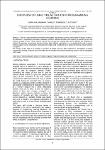Overview of using visualisation in programming learning
| dc.contributor.author | Alhammad, S | |
| dc.contributor.author | Atkinson, Shirley | |
| dc.contributor.author | Stuart, EJ | |
| dc.date.accessioned | 2018-10-12T19:54:14Z | |
| dc.date.issued | 2018-07-31 | |
| dc.identifier.uri | http://hdl.handle.net/10026.1/12492 | |
| dc.description.abstract |
There is a high demand for mechanisms that support programming teaching, particularly in finding a solution to the bottleneck in programming education. Nowadays, different methods of teaching can support the learning process and motivate students to learn. These methods improve the thinking and creativity that lead to defining and analysing the problem of supporting programming learning to devise ideal solutions. Approaches such as visualising the code or using a memory diagram to trace the program’s execution have made a vital contribution to the process of teaching and learning how to program. The purpose of this paper is to provide an overview of studies that have been conducted in visualisation to support programming learning. Moreover, tools that follow the visualisation and memory-referencing approach will be investigated in this paper. | |
| dc.format.extent | 20-24 | |
| dc.language.iso | en | |
| dc.publisher | IRAJ | |
| dc.rights | Attribution-NonCommercial-NoDerivatives 4.0 International | |
| dc.rights | Attribution-NonCommercial-NoDerivatives 4.0 International | |
| dc.rights | Attribution-NonCommercial-NoDerivatives 4.0 International | |
| dc.rights | Attribution-NonCommercial-NoDerivatives 4.0 International | |
| dc.rights.uri | http://creativecommons.org/licenses/by-nc-nd/4.0/ | |
| dc.rights.uri | http://creativecommons.org/licenses/by-nc-nd/4.0/ | |
| dc.rights.uri | http://creativecommons.org/licenses/by-nc-nd/4.0/ | |
| dc.rights.uri | http://creativecommons.org/licenses/by-nc-nd/4.0/ | |
| dc.subject | Memory diagram | |
| dc.subject | Memory Transfer Language | |
| dc.subject | Programming learning | |
| dc.subject | Visualisation | |
| dc.title | Overview of using visualisation in programming learning | |
| dc.type | journal-article | |
| plymouth.issue | 7 | |
| plymouth.volume | 5 | |
| plymouth.publisher-url | http://iraj.in/publisher.php | |
| plymouth.journal | International Journal of Advances in Electronics and Computer Science | |
| plymouth.organisational-group | /Plymouth | |
| plymouth.organisational-group | /Plymouth/Faculty of Science and Engineering | |
| plymouth.organisational-group | /Plymouth/Faculty of Science and Engineering/School of Engineering, Computing and Mathematics | |
| plymouth.organisational-group | /Plymouth/REF 2021 Researchers by UoA | |
| plymouth.organisational-group | /Plymouth/REF 2021 Researchers by UoA/UoA11 Computer Science and Informatics | |
| plymouth.organisational-group | /Plymouth/Users by role | |
| plymouth.organisational-group | /Plymouth/Users by role/Academics | |
| dcterms.dateAccepted | 2018-07-31 | |
| dc.rights.embargodate | 2018-10-30 | |
| dc.rights.embargoperiod | Not known | |
| rioxxterms.licenseref.uri | http://creativecommons.org/licenses/by-nc-nd/4.0/ | |
| rioxxterms.licenseref.startdate | 2018-07-31 | |
| rioxxterms.type | Journal Article/Review |



